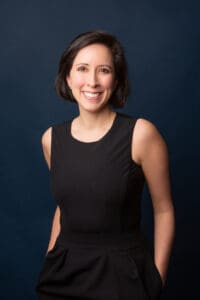 By Nan Price, Content Manager, MetroHartford Alliance
By Nan Price, Content Manager, MetroHartford Alliance
Hartford’s First Lady, architect, and attorney Sara Bronin lives and works in Connecticut’s capital city.
Why Hartford?
SARA BRONIN: My husband and I first came to Hartford because of a job I took at the University of Connecticut School of Law, where I still work. We stayed because Hartford has so much heart. It has vibrant neighborhoods, excellent food, a committed group of community leaders, and so many great physical assets from the parks to the River. It’s a wonderful place to live and work.
What impact do you hope you’re making in the Hartford Region?
SARA: A lot of my work in the region has focused on improving the ways we develop and use our land. In Hartford itself, I served for seven years on the planning and zoning commission. Collaborating with many community members, our commission adopted a new zoning code, climate action plan, and city plan, which will all shape our city for years to come.
Beyond Hartford, over the last nine months, I’ve been working on zoning reform on a statewide level through a coalition called Desegregate Connecticut. If the state legislature adopts our proposals, housing will be easier to build and the Hartford Region will grow stronger as a result.
How have you become a part of Hartford and how has Hartford become a part of you?
SARA: Anyone who is a part of Hartford knows that our community is at its best when we are together—at religious ceremonies, enjoying our museums and galleries, listening to music in our parks, or attending neighborhood events.
When we resume “normal life” after the pandemic, I’m going to be so excited to get back out into the community and see people engaging and building community once again.
What makes Hartford unique?
SARA: Hartford is a historic city, almost 400 years old, with so many layers that have shaped the way the city has developed over time. We have a unique place within the region as its cultural heart and as an economic engine.
We also have really unique experiences. When we undertook our city planning effort, we asked people from around the region what places in Hartford they would recommend to visitors. The hundreds of responses we received just illustrate the breadth of how people experience Hartford. Everything from historical sites, like the Mark Twain House & Museum and the Harriet Beecher Stowe Center, to our parks, including Bushnell Park and Riverside Park, to our theaters, which we will be so excited to see reopen, to our baseball and soccer stadiums.
Again, I can’t wait for the city to fully reopen after the pandemic so we can once again welcome people from the region and beyond to experience all these things that residents living here know and love.
How do you tell the story of Hartford?
SARA: The story of Hartford can only be told through many diverse voices in many diverse formats. Our theater community tells our story through performance. Our history buffs lead walking tours and community presentations to remind us of who we were. Our visual artists paint murals about past local leaders or our future potential. We have filmmakers in town who have produced videos inviting everyone to make Hartford their own.
To hear voices of those no longer alive, one need only stop into the Hartford Public Library, whose history center has done an amazing job of assembling resources from a diverse array of people who have passed through and lived in Hartford. There’s no one way to tell Hartford’s story. Hartford contains multitudes of stories and all of us need to speak up to tell them. Thanks for letting me do that with you here.
